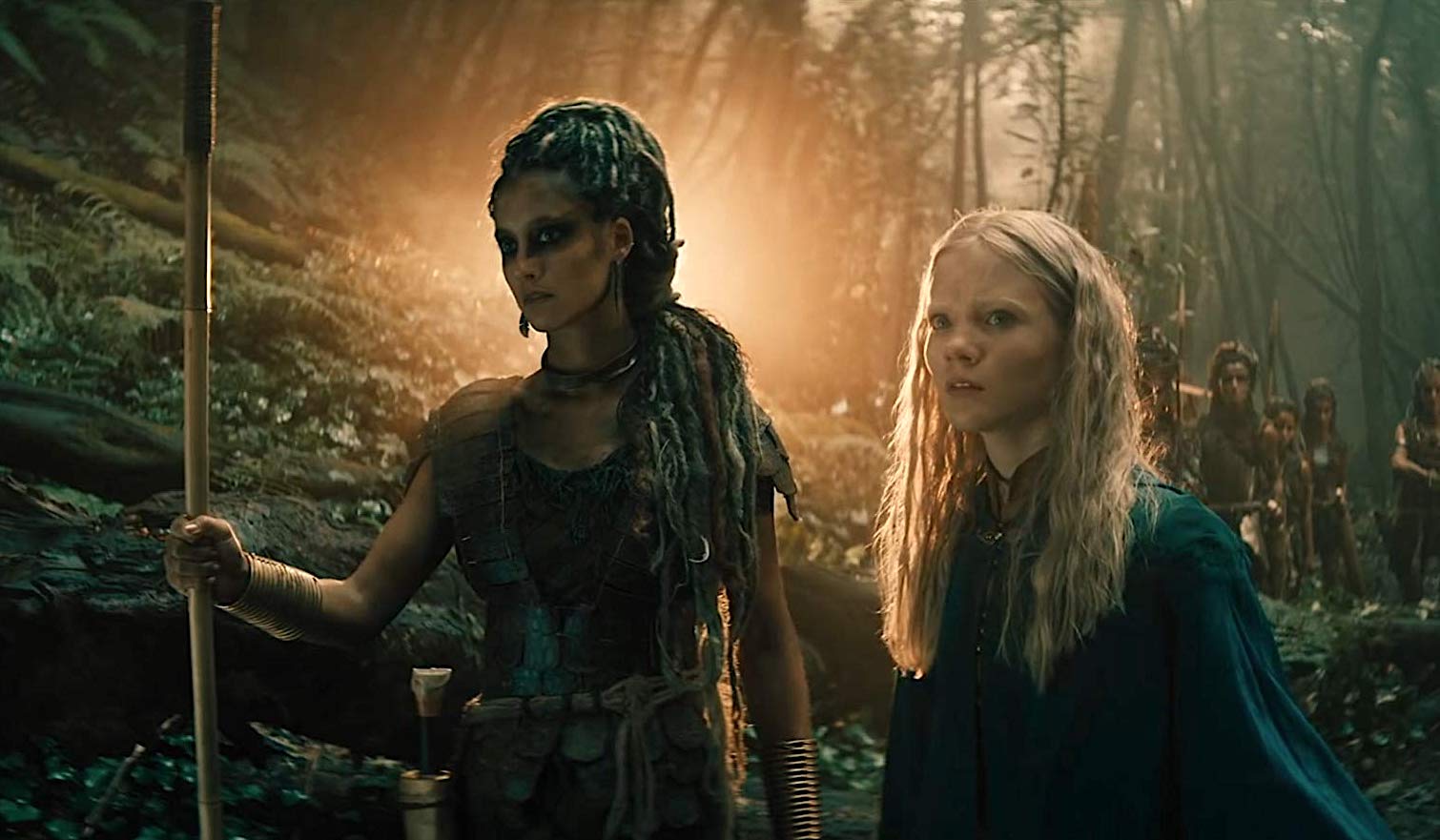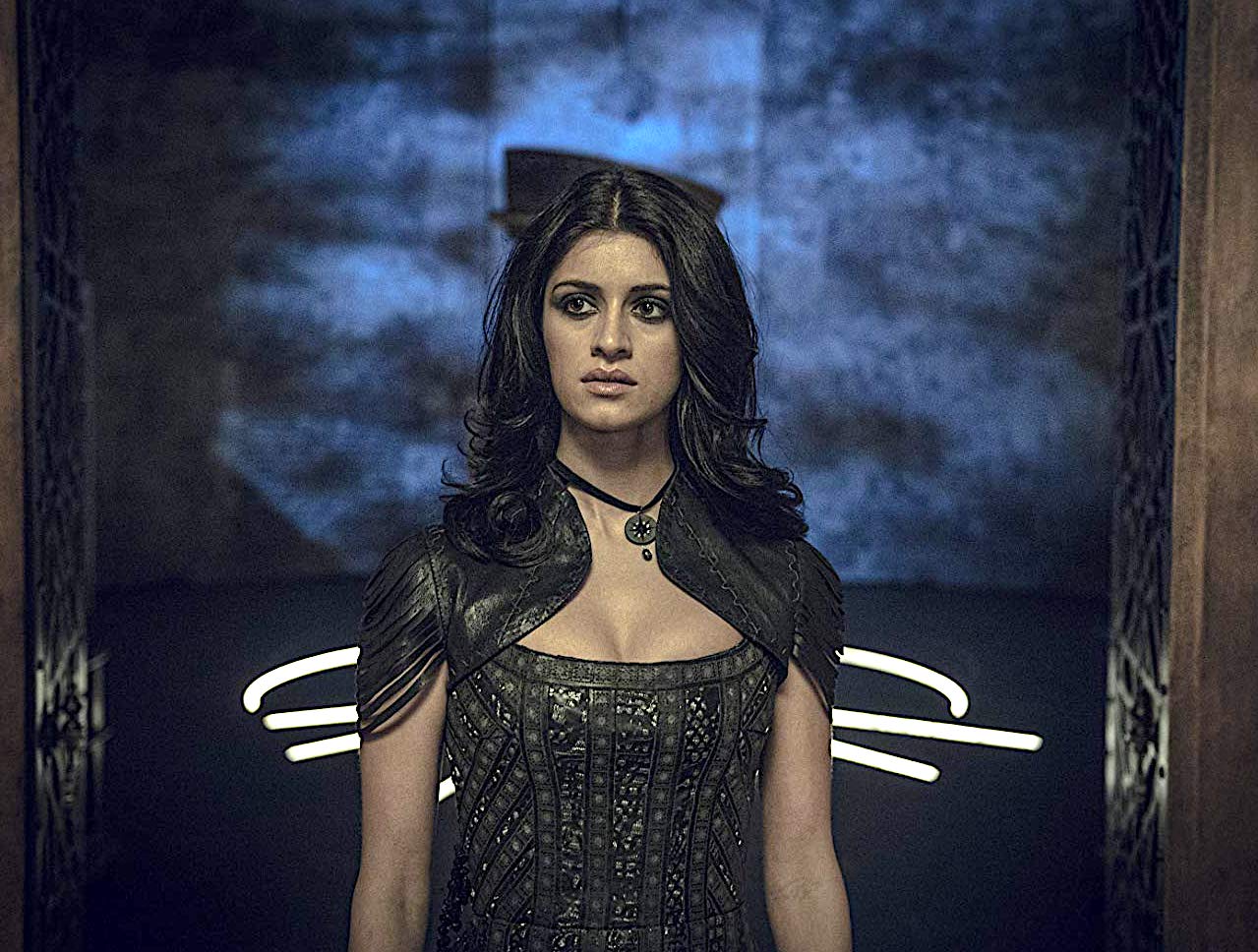How ‘The Witcher’ showrunners turned 3,000 pages of material into an 8-part Netflix series

Henry Cavill in “The Witcher”—PHOTOS BY NETFLIX
How did “The Witcher” make its jump from page to screen? On her recent visit to Manila for the show’s promo blitz in Asia, showrunner Lauren Schmidt Hissrich shared with Inquirer Entertainment in this exclusive one-on-one interview what it took for the popular novel to make the big jump from page to screen.
There were three journalists—one from Australia, another from South Korea and this writer—invited to have a one-on-one chat with “The Witcher” showrunner Hissrich at the recent “The Witcher” junket in Manila.
But for us, it was just as much of a thrill to meet Hissrich because we were also an avid follower of “The Umbrella Academy,” “Daredevil,” “Private Practice” and “The West Wing,” where she also served as writer-producer.
“The Witcher,” based on the series of novels byAndrzej Sapkowski, began streaming on Netflix last Dec. 20. But there’s good news for fans of the series who want to know the future that lies ahead for Geralt of Rivia, Princess Cirilla and Yennefer of Vengerberg: The eight-episode second season will begin shooting in London early next year, and is scheduled to debut in 2021.
The series was shot for 178 days, over a seven-month period.
Article continues after this advertisementOur chat with Hissrich:
Article continues after this advertisementQ: You have conceived a tantalizing world that manages to go beyond the knee-jerk thrills of online gaming. How did you and Tomek Baginski as showrunners develop the idea from the book and the game? Isn’t it scary to have to live up to fans’ expectations?
A: Oh, there are fans’ expectations that we have to live up to, indeed. Tomek has actually been on the project much longer than I have. It was he who went to Andrew Sapkowski, the author, and said, “I think these books would make a great movie.” He was the one who convinced Andrew to let go of his rights and turn his work over to Tomek and this eventual team.
There are eight books, so there are about 3,000 pages of material, and Tomek very quickly realized that creating a movie about it would be great, but it would have to have a natural ending that ends after two hours. But in television, we’re telling this story over eight hours for the first season.
So, I came on the project after Tomek partnered with Netflix and decided to turn it into a TV show. I have only ever written for TV. That’s my passion—to take a story and make it grow over all of these episodes continually and sort of not knowing where it’s going to end quite yet. To be honest, that’s basically part of the journey and adventure.
In terms of fan expectations, I’m not scared—I’m just really excited. Truthfully, I draw on fan enthusiasm. Very early on in the process, I got on Twitter, not to “take down notes,” but to know why its followers loved “The Witcher”—that’s important to me in the process of adapting it. I knew why I loved it, but I wanted to understand why fans all over the world connected with this material. Obviously, it’s a Polish book series, so there’s a lot of Polish mountains and references. But “The Witcher” has an international fan base—some because of the game, some because of the books. So clearly, there are themes and elements of these stories that appeal to people all over the world, not just to people who grew up in Central Europe.
That to me is exciting—and that was what I wanted to know when I joined Twitter: Tell me why you love these books, tell me what drives you to continue reading them over and over again, and what are you passionate about? What I found is that the fans and I had a lot in common. And I think, over the last two years, I’ve earned their trust because they know that I love these stories the same way they do.

Nora Trokan (left) and Freya Allan
Q: “The Witcher” is also a popular game, although it’s known for its violence. Did you consult your sons, Harry and Ben, about the game, because it’s a young man’s genre?
A: My sons are 6 and 8 years old, so they will not [be allowed to] play the game for many more years (laughs). But I have a ton of friends who are huge fans of the games, which are very popular in the United States. I did ask them what they loved about it and Geralt. I think the games’ existing fans feel honored that we’re doing this and asking what they think about it.
Q: How did you end up casting Henry Cavill, who we heard lobbied actively to get cast as Geralt?
A: That is very true. You know, Henry is a huge gamer who had been very much in love with the character of Geralt. When he heard that Netflix was doing a show, he reached out via his agents to say, “I just want to meet with someone. I want to sit down and have a meeting with whoever’s in charge of the show.”
Q: What tipped it in Henry’s favor?
A: Henry was very passionate about it. To me, being a fan of the material was enough, because he had to be able to embody Geralt’s essense. There are a lot of things that I love about Henry—I mean, I don’t think that he kills monsters in his free time (laughs), but there are elements in him that are present in Geralt.
One is Henry’s stoicism, his silence. The fact that he doesn’t need to respond or answer to everything. That he withholds a lot of emotions from the world—that’s Henry. He also has a wickedly dry sense of humor, which is something that’s very important to put in Geralt.
And also, Henry very much leads with his heart—he’s spoken about this very eloquently with his character, because Geralt puts up a lot of boundaries and barriers, and he doesn’t necessarily display them for all the world to see.

Anya Chalotra
Q: Do you think that’s an advantage in terms of his characterization?
A: Absolutely, because I do believe that when we find Geralt swashbuckling his way through monsters, he presents just one side of himself. But when we see him with Renfri in the first episode and then he eventually meets Yennefer and Ciri, we also need to believe that he has a heart. He may not choose to always see it or always show it, but he very much leads with this desire to be good in the world—and that very much influences the character.
Q: There’s some fine singing from Joey Batey, playing Jaskier. It actually leavens the doom and gloom of the whole thing and gives the show a sense of medieval texture. It also gives “The Witcher” its own character as a series. Was it a conscious decision to incorporate some music into it?
A: Oh, definitely. So, the character of Jaskier is a bard—that’s what he is in the books. He is a storyteller via his music, and so very early on, we wanted to use Jaskier’s songs in order to help move our story. It does lighten the material a bit, again, and that’s one of my favorite things about the show—because the world of “The Witcher” doesn’t have to be all doom and gloom, or dirty, dusty and gross all the time.
There are also moments of great humor, because that’s how many humans deal with darkness and tragedy. Sometimes, they have to rely on their own sense of humor or else, why are they going to keep getting up in the morning? And that’s the perspective that Jaskier brings into this world.
Q: How long did it take you to shoot Season 1?
A: Oh man, we had 178 days’ worth of shooting. We started in October and wrapped around the end of May. All in all, we shot for over seven months.
Q: It looks like a complicated show to make. What were your biggest challenges during the whole thing?
A: It was an incredibly complicated show to make, but the good news is, I didn’t have to do all the work. My challenge was hiring the best people to run the show with me. The series has a lot of complicated elements about it, so I had to make sure that I was hiring passionate people, then trusting them to do their jobs well.

Lauren Schmidt Hissrich (left) at “The Witcher” fan meet in Manila —PHOTO BY NETFLIX/MAGIC LIWANAG
Q: For the fans, what changes did you make from the book?
A: No matter what, when you adapt something from books to TV, you’re going to make changes because you can’t go word for word into television because we only have eight hours to tell these stories. What I would say that we tried to do, though, was to make sure that we were honoring the stories from the books.
Fans will hear dialogue that they recognize, they will see visualizations of this world and the characters they’re very familiar with. We go back to the books as our source material all the time. Then, we make sure we’re telling fulfilling stories.
Sometimes, there are moments that are missing in the books—like Yennefer’s past to me was something that was missing, and we just hear little tidbits about it. Well, I wanted to be on that journey with her.
So, one of the things that we did was, we took all of those tidbits and wove them together to create a story that fans recognize. We’ve just flushed them out and added a little bit more to make sure that it’s dramatically fulfilling.